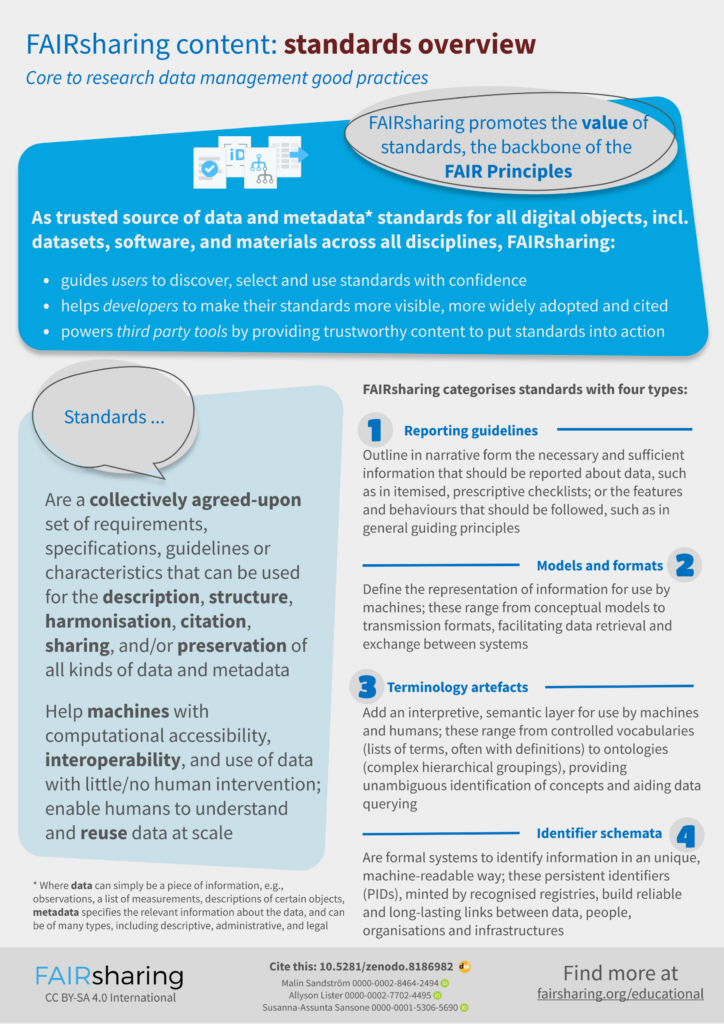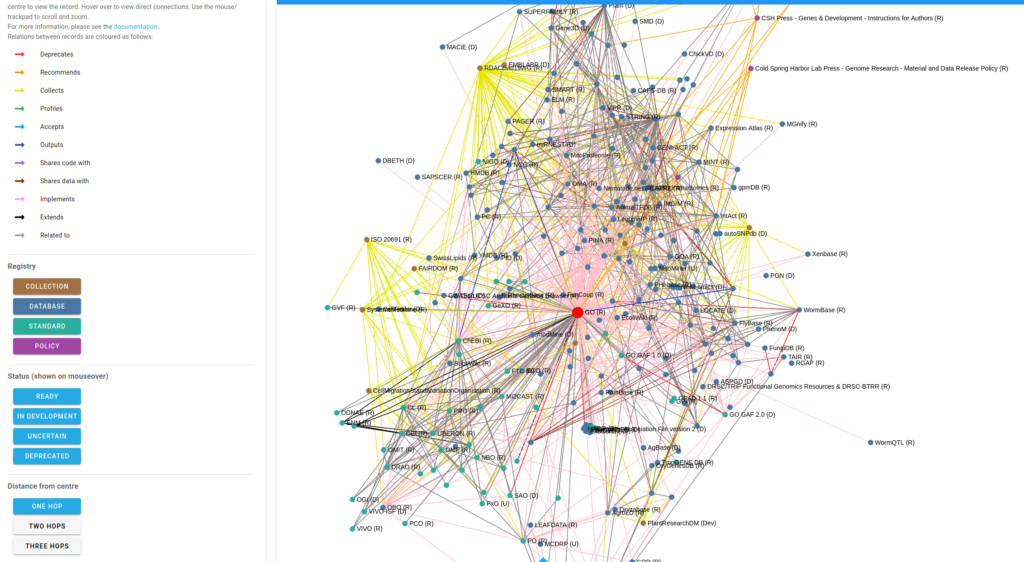A new paper published by members of the EOSC Task Force on Semantic Interoperability aims to identify those dimensions and features that should be used to assess the maturity of catalogues of semantic artefacts. It has produced a list of 43 attributes of terminology registries or repositories (‘features’) across 12 broad categories (‘dimensions’). After updates by FAIRsharing to the authors’ assessment as described below, and ignoring those features/attributes that are lower/equivalent in stringency (5/43) or out of scope for a registry (4/43), FAIRsharing shows extremely high alignment with the model, implementing 31/34 of its maturity features.
The full, updated alignment is available at this google spreadsheet, and additional documentation is available in our FAIRsharing Gitbook pages.
Terminologies are just one component of the FAIRsharing standards registry. As the first page from our standards factsheet states, the FAIRsharing standards registry contains terminologies, reporting / minimal information guidelines, models/formats, and identifier schemata.

FAIRsharing provides not only manually-curated records for standards, databases and policies, but also a rich graph of the connectivity among these resources, placing each record within the broader context of the research data landscape. When you visit FAIRsharing to register, compare or help discover resources such as terminologies, you are able to discover and describe both their features and their interconnectedness.

As the authors state, these features should be useful in the future to aid (a) understanding of how semantic artefacts should be used; (b) data stewards in using these artefacts; and (c) adoption (via greater confidence in resources that score highly in the maturity model) by data producers, publishers and researchers.
Find out more about our registries at https://fairsharing.org/educational
